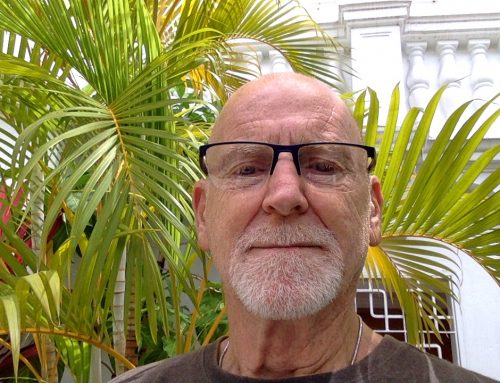I Am a We, and We Are Stronger Together
There is strength in numbers.
Two heads are better than one.
It takes a village to raise a child.
United we stand, divided we fall.
We are stronger together.
There are many popular phrases that talk about the power of teamwork, the advantages that can come from banding together with your fellow humans for a common goal. But when you mention dissociative identity disorder (more commonly known by the old, outdated terminology of “multiple personality disorder”), most people wouldn’t think of those phrases. Instead, they might think of words like “dangerous”, “psychotic”, or “violent”. Or alternatively, they might think of words like “weak”, “pitiable”, or “unstable”. It’s not difficult to see why many people would make those connections. Unfortunately, there hasn’t been a lot of actual education about DID in the media, or popular culture, or even in schools of psychology. Most of the fictional stories that have been made about people with DID are horror stories, following the pattern of Dr. Jekyll and Mr. Hyde: the “good, mild-mannered one”, and “the evil, dangerous one”. Sometimes they add in a few other cookie-cutter stereotypes as well, like “the seductive one,” “the scared child,” “the rebellious teenager,” “the animalistic one,” and “the control freak.” Most of the documentaries or truth-based movies are overly dramatized and purposely made to emphasize the perception that people with DID are weak, unstable people who are perpetual victims and a burden on their family and friends. Both of these extreme portrayals ignore the realities of DID. The violent portrayal ignores the fact that DID systems are statistically far more likely to be the victims of violent crime than the perpetrators of it. The perpetual victim portrayal ignores the fact that DID systems are survivors by nature. They are resilient, creative, and capable of learning how to live a healthy, happy, and productive life.
Don’t get me wrong, I’m not saying it’s easy to live life as part of a DID system. I know that it’s not, from personal experience. My name is Leyna, and I am one of seventy identities who share the body and the life known as Douglas Jonathan Vincent. You may think that’s an unbearably huge amount, but again, that would be a misconception due to a lack of enough accurate information about DID in the media. I have personally met systems who have hundreds to over two thousand identities, and have read about others online who have even more than that. But as our therapist often likes to say, the severity of DID has nothing to do with how many of you there are. It has much more to do with how well you all can learn to coexist, love each other, and help each other to live your collective life to the fullest. That’s not an easy thing to do. Because of the fact that DID is caused by childhood trauma, often (but not always) in the form of severe abuse and/or neglect, most of us have severe trust issues, even with the other members of our own system. It takes a lot of work to process the emotions from our past trauma and begin to break down those walls of mistrust we have built around ourselves. I remember our therapist telling us when we first started therapy with him, “This will be the hardest work you have ever done in your life, but it will also be the most rewarding work.” He was right.
After years of hard therapy work, our system is finally starting to see the truth of the fact that we can be stronger together. That mindset has influenced the terminology that we use to describe ourselves. There are many different terms that DID systems use to describe the individual identities in their system: alters, parts, identities, headmates, internal family, and others. The one that I think most systems would agree makes us cringe is “personalities”. That’s because, while it may be true that we have different personalities within our system, that’s not all that we are. We are full identities, which includes not just a personality, but personal opinions, likes and dislikes, hopes, fears, dreams, and most importantly, a separate sense of self. That’s part of the reason why the terminology of this disorder was changed, because “multiple personalities” is not really an accurate description of what, or rather who, we are.
Having said all that, the term our system uses most often to describe ourselves is “parts”. There are other systems who hate that term, and we can understand why. For some, it seems too impersonal, like we are bolts and screws in a machine, not people. For others, it seems to reinforce the misconception that the part of us who identifies most with the body and often has the same name as the body’s legal name, is “the real one” and the rest of us are parts OF that identity. We certainly agree that this is a misconception. The part of us known as “Doug” is not more real than the rest of us, and we are not pieces of who he is. So why would we want to be called “parts”, then? Because it reminds us that while we may not be parts of “Doug”, we are all, including Doug, part of one shared life. As much as we would each like to do our own thing and be our own person all the time, that’s not possible when we all share one body. There has to be a lot of compromise, and a lot of “tag team” style cooperation to maximize our effectiveness by sharing our strengths to help others in the system with their weaknesses. Calling ourselves “parts” reminds us that we are all in this together, and that together, we can be stronger than any one of us could be alone. In our case, it takes a village to raise a village.

Leyna Vincent is one of several identities who share the life known collectively as Douglas Jonathan Vincent, a survivor of dissociative identity disorder. The Douglas Vincent system lives in the midwest area of the United States with their wife and cat, and has a Bachelor of Arts degree, a full time job and a volunteer job. In her spare time, Leyna enjoys learning about psychology, listening to her favorite music, including The Beatles, Billy Joel, and Eric Clapton, and helping to spread awareness and education about DID online.








Leave A Comment